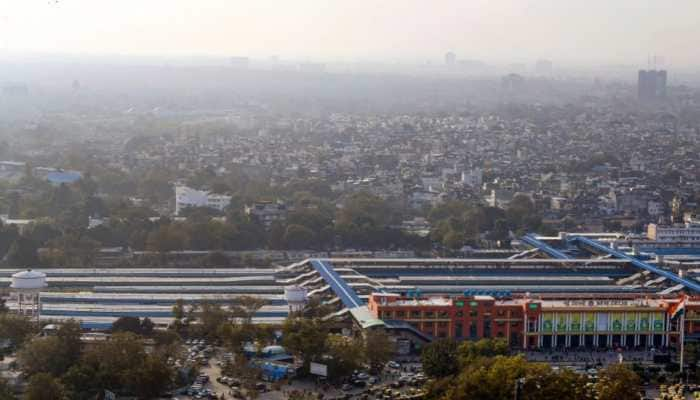Revealed: Genetic details of controversial technique used to create world's first three-parent baby
Now, after months of intense debate and speculation, the researchers has revealed more details about the child's conception in a paper published in the journal Reproductive BioMedicine Online (RBMO).
Trending Photos
) Pic courtesy: New Hope Fertility Clinic (John Zhang holds the baby boy his clinic conceived using DNA from three people)
Pic courtesy: New Hope Fertility Clinic (John Zhang holds the baby boy his clinic conceived using DNA from three people) New Delhi: Last year, a US fertility clinic revealed that it had created the world's first three-parent baby, giving hope to childless couples and families with inheritable mitochondrial disorders.
The baby boy who was born to a Jordanian couple using a controversial technique that mixes DNA from three people - the usual DNA from his parents, and a small amount of genetic code from a donor.
Now, after months of intense debate and speculation, the researchers has revealed more details about the child's conception in a paper published in the journal Reproductive BioMedicine Online (RBMO).
In the study, the team of researchers led by clinic’s leader physician John Zhang describe the procedure of mitochondrial replacement therapy (MRT) which helped in the birth of a healthy baby boy who was a carrier of Leigh Syndrome - a progressive, fatal and genetic neurological disorder caused by a mutation in the mother's mitochondrial DNA.
"Thirty years ago it was discovered that certain rare diseases are associated with abnormal, mutated mitochondria in human cells. Ten years after that initial discovery, egg microsurgery enabled IVF specialists to change the cytoplasm including mitochondria from patients who had failed IVF multiple times," said Jacques Cohen, director of the ART Institute of Washington, Virginia.
"Now, for the first time, an egg with abnormal mitochondria can be changed to contain mostly normal mitochondria from a healthy egg donor. This is a major change of technology and an obvious advantage for women who are at risk of passing such diseases on to the next generation," added Bart Fauser, professor and editor-in-chief of RBMO.
Using an electrofusion technique, the researchers transferred the nuclear genome from the mother's egg (while leaving behind most of the mother's mitochondria) to the cytoplasm of a donor egg containing only healthy mitochondria.
This egg was then fertilised by the father's sperm and transferred to the mother's womb and a baby boy was born at 37 weeks after an uneventful pregnancy.
The announcement of the birth of the first baby born using MRT was met with mixed reactions in the media and will continue to generate debate surrounding the technique throughout the world, paving the way for changes in the law and regulation, the researchers noted.
The study notes that the researchers had the baby's parents sign a consent form acknowledging that their egg was undergoing an experimental technique.
(With IANS inputs)
Stay informed on all the latest news, real-time breaking news updates, and follow all the important headlines in india news and world News on Zee News.
Live Tv







)
)
)
)
)
)
)
)
)
)
